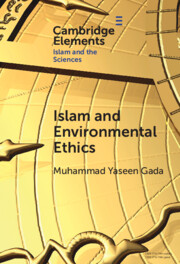Element contents
Islam and Environmental Ethics
Published online by Cambridge University Press: 13 April 2024
Summary
Keywords
Information
- Type
- Element
- Information
- Series: Elements in Islam and ScienceOnline ISBN: 9781009308236Publisher: Cambridge University PressPrint publication: 09 May 2024
References
Accessibility standard: Unknown
Why this information is here
This section outlines the accessibility features of this content - including support for screen readers, full keyboard navigation and high-contrast display options. This may not be relevant for you.Accessibility Information
- 8
- Cited by
